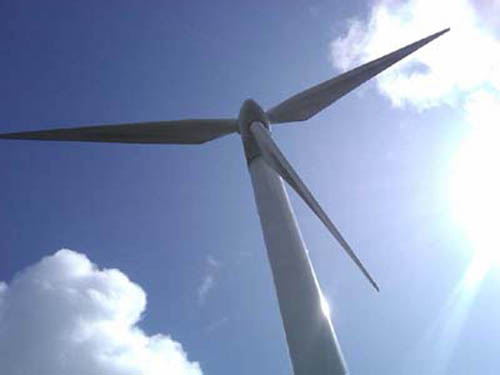At the launch of EirGrid's 'Annual Renewable Report for 2011' today are (from left) Dermot Byrne, chief executive, EirGrid; Bernie Gray, chairperson, EirGrid; and Pat Rabbitte, TD, Ireland's Minister for Communications, Energy and Natural Resources
The island of Ireland has surpassed the rest of the EU countries for its wind energy integration. That’s according to EirGrid chief executive Dermot Byrne, who says Ireland is in a position to become a global leader for wind energy take-up. However, it will require open communication from industry stakeholders, he warned.
Speaking this morning, Byrne said current estimates predict how the island of Ireland will reach a level of installed wind generation in 2020 that will be enough to meet around 37pc of electricity demand.
“This is greater than any other synchronous region in Europe over this timeframe,” he said.
While the majority of the 40pc renewable electricity target will be met from wind generation, he said Ireland’s – and EirGrid’s – work will not stop with wind.
“There is ongoing work to develop a better understanding of the potential for integrating other renewable sources, such as ocean energy technology, biomass and waste-to-energy plants,” said Byrne.
EirGrid today released its Annual Renewable Report for 2011, and Ireland’s Energy Minister Pat Rabbitte, TD, was on hand at Dublin Port this morning to support the country’s wind-energy drive.

So where is the island for wind energy?
- Ireland and Northern Ireland now have a total of 2,262 megawatts of renewable electricity capacity.
- With 15pc of wind now part of Ireland’s electricity portfolio, the island is well on its way of reaching its target of having 40pc electricity being generated from wind by 2020 (most likely 37pc)
- Smarter technologies, such as energy tech, biomass and waste-to-energy plants, will be playing an increasing role in helping Ireland hit its 2020 targets, as well as overthrowing its current 90pc-plus dependence on energy imports for its energy needs.
Against a backdrop of fiscal volatility in the EU, the island of Ireland overall still managed to install a combined 270MW of wind generation – Ireland (218MW) and Northern Ireland (52MW) – since EirGrid’s September 2010 report.
This has brought the total installed renewable generation on the island to 2262 MW.
However, EirGrid did acknowledge today that the rate of yearly installed wind will need to increase in order to reach the circa 5100MW goal of wind generation to meet the 40pc renewable electricity targets (north and south) by 2020.
It said that technology building blocks will include:
- Energy technology
- Biomass
- Waste-to-energy plants
EirGrid has also recently published the results of an offshore grid research study that examines the potential viability of offshore grids in the seas around Ireland.
“We are continuing our active involvement in the North Seas Countries Offshore Grid Initiative with nine other European countries,” said Byrne.
He said that EirGrid and SONI (System Operator for Northern Ireland) have worked on identifying many of the operational challenges to managing high levels of variable renewable generation on the power systems of Ireland and Northern Ireland up to 2020.
And the outcome is that EirGrid has initiated a three-year programme called Delivering a Secure, Sustainable Electricity System (DS3) to develop the appropriate solutions.
Engagement from industry stakeholders
“The broad nature and strategic importance of this work means that any decisions taken will need input and engagement from all relevant industry stakeholders, and we are working to facilitate open communication and co-ordination at all stages of this process,” said Byrne.
He said that moves towards increasing amounts of renewable generation on the power system will also require continuing work on the island’s grid infrastructural programmes (GRID25, and RIDP), as well as the Gate 3 grid connection process, and additional technical analysis.